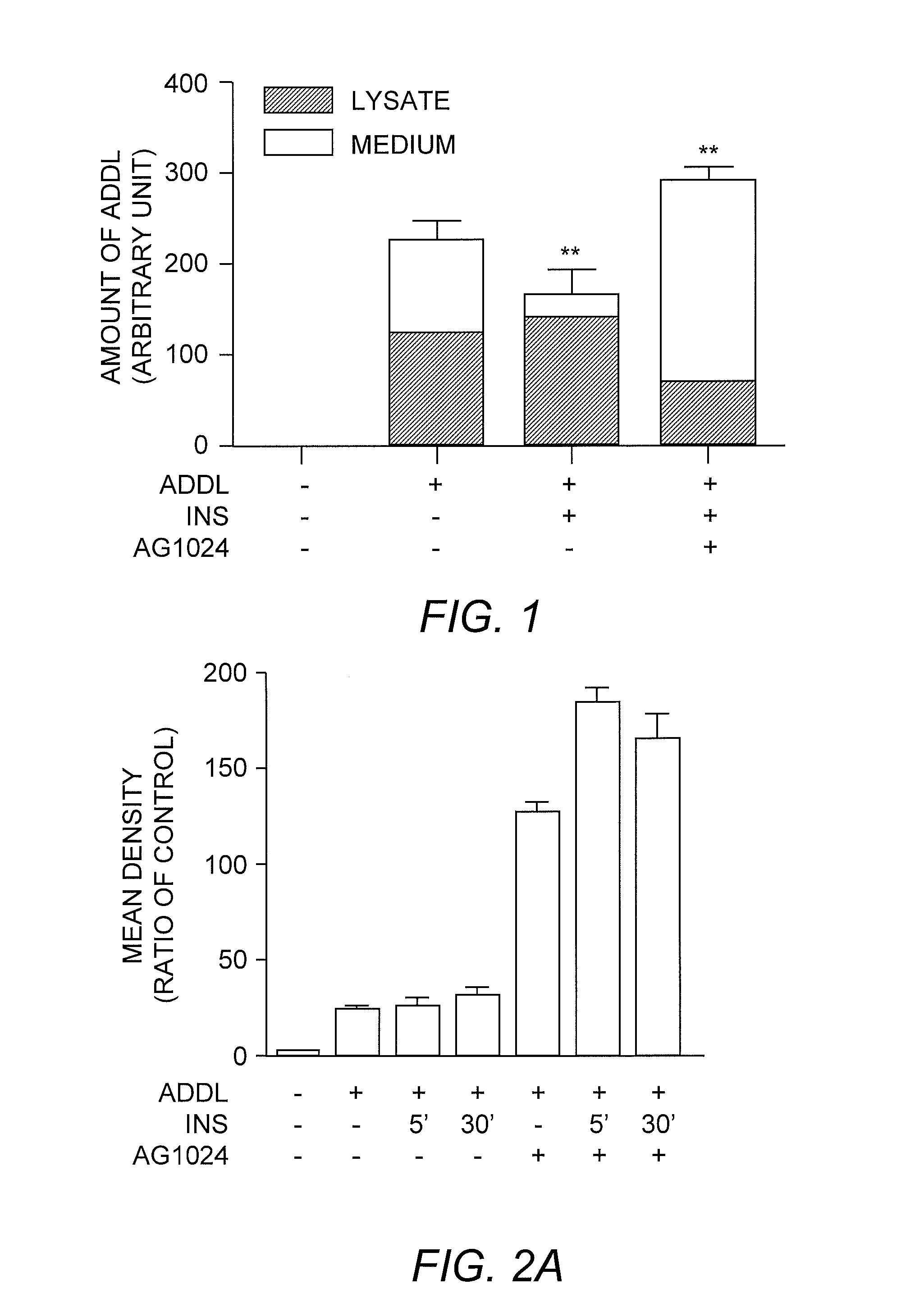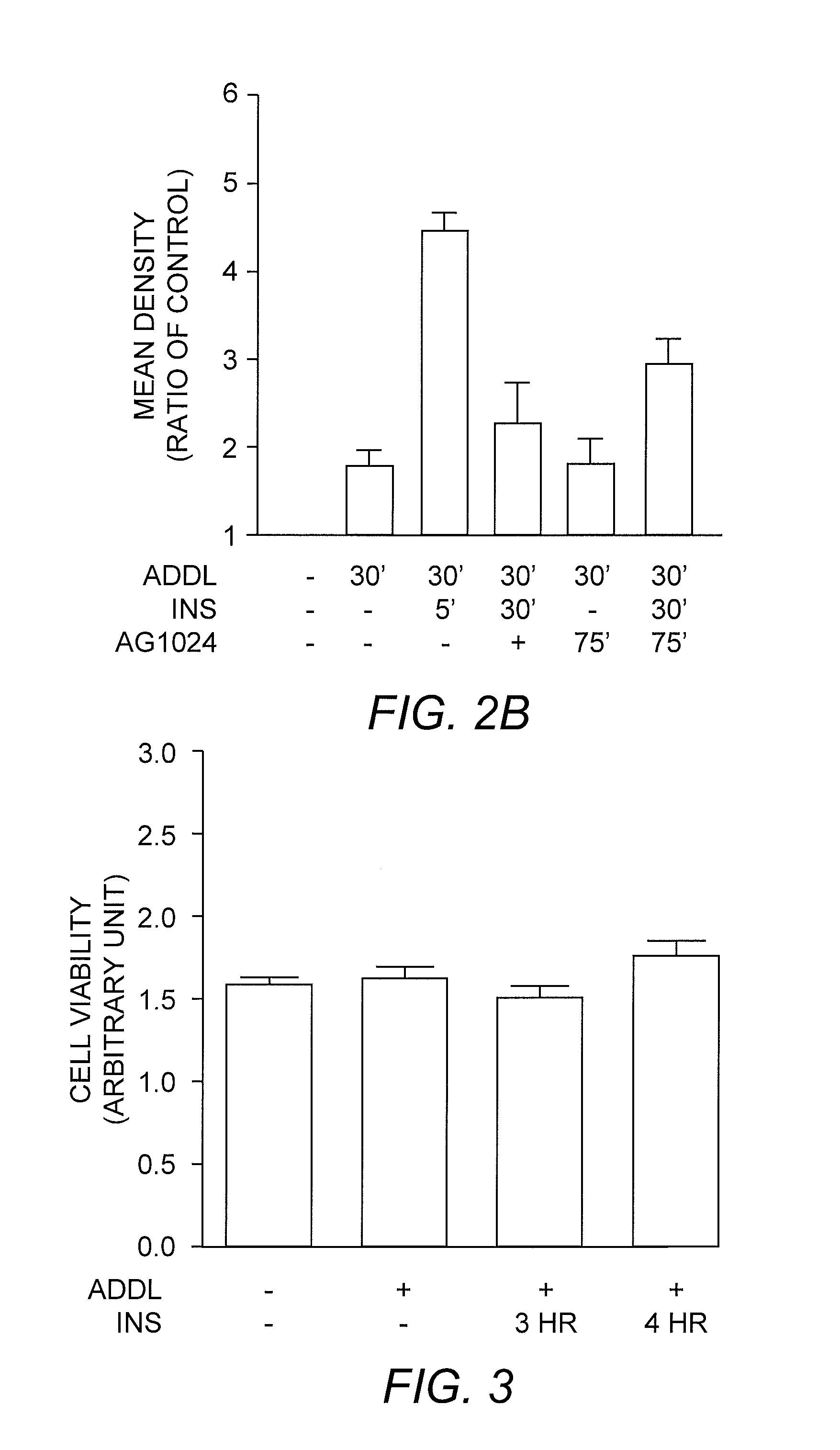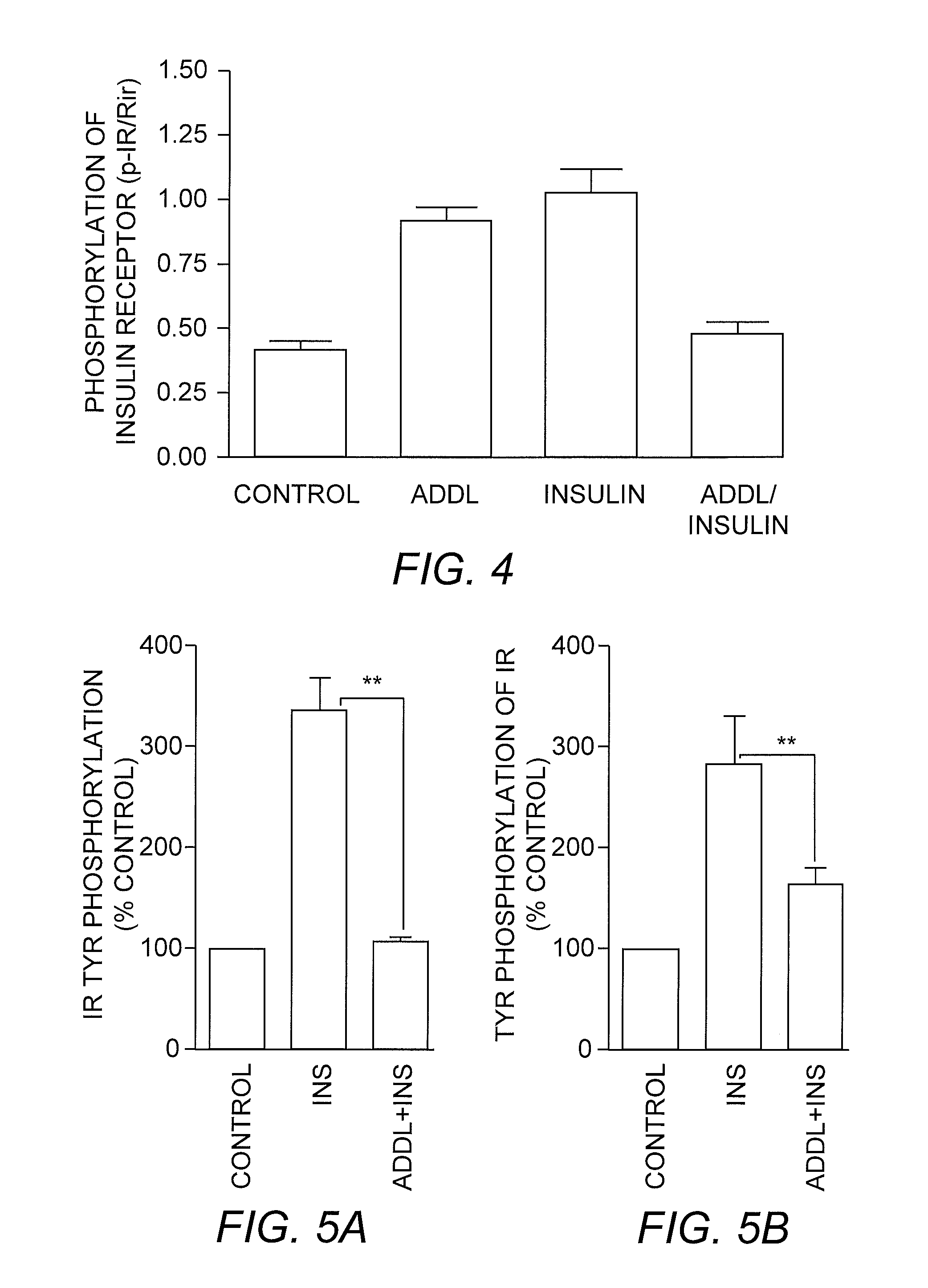Compositions and methods for the enhancement of soluble amyloid beta oligomer (ADDL) uptake and clearance
a technology which is applied in the field of compositions and methods for the enhancement of soluble amyloid beta oligomer (addl) uptake and clearance, to achieve the effects of enhancing insulin receptor signaling, and enhancing the cellular uptake of soluble amyloid beta oligomer
- Summary
- Abstract
- Description
- Claims
- Application Information
AI Technical Summary
Benefits of technology
Problems solved by technology
Method used
Image
Examples
example 1
ADDL Uptake and Clearance by Non-Neuronal Cells Occurs Via Signaling of the Insulin Receptor
[0037] To establish the roles of insulin receptor in neurotoxic soluble oligomeric Aβ peptide assembly (referred to hereafter as ADDL) clearance and trafficking, experiments were performed to determine the extra- and intracellular levels of ADDLs added to cells over-expressing insulin receptor. The cells were incubated with 100 nM ADDL with or without insulin. The results of this analysis indicated that insulin treatment stimulated ADDL uptake: an increase in ADDL levels from the cell lysates was accompanied by a decrease in ADDL levels from the extracellular medium (FIG. 1). As a result, the total amount of ADDLs was significantly reduced (P<0.01). When cells were pretreated with the insulin receptor kinase inhibitor AG1024, the insulin-stimulated ADDL internalization was prevented, resulting in a markedly higher amount of ADDL aggregates in the extracellular medium. Total ADDL levels were ...
example 2
ADDL Uptake and Clearance by Neuronal Cells
[0068] Soluble Aβ oligomers (ADDLs) play a central role in the development of Alzheimer's disease (AD), during which ADDLs cause damage to synapses that are responsible for cognition impairment and further, neuronal degeneration. New findings disclosed herein indicate that ADDLs attack the insulin receptor signaling system in primary neuronal cultures leading to CNS insulin resistance. Treatment of cultured neurons with ADDLs causes a significant inhibition of insulin-induced insulin receptor activity. The reduced insulin receptor activity is accompanied by increases in serine phosphorylation of insulin receptor, serine (307) phosphorylation of insulin receptor substrate 1 (IRS1), and serine (473) phosphorylation of PKB / Akt. All these serine phosphorylations counter-regulate insulin receptor tyrosine kinase activity. These changes are molecular characteristics of insulin resistance identified in type II diabetes, obesity and hypertension. ...
example 3
ADDL Binding and Insulin Receptor Levels
[0077] For ADDLs to impair insulin receptors, ADDL binding sites and insulin receptors should occur on the same neurons. This was investigated using cultures of mature hippocampal neurons, which have been shown to develop clusters of ADDL binding sites specifically at synapses (Lacor, et al. (2004)). ADDLs were added to cultures at 100 nM and incubated for 30 minutes to allow for complete binding. ADDL binding sites exhibited the same punctate distribution previously seen. Insulin receptors, identified using antibodies against the outward-directed alpha sub-unit, also distributed in a punctate manner. ADDL binding occurred on neurons that expressed insulin receptors, although not on all of them (˜40% of neurons had insulin receptors but no ADDL binding). Most significantly, however, the subcellular distribution of insulin receptors was strikingly different on neurons with and without bound ADDLs. Neurons with ADDL binding showed virtual absen...
PUM
| Property | Measurement | Unit |
|---|---|---|
| pH | aaaaa | aaaaa |
| concentration | aaaaa | aaaaa |
| neurotoxic soluble | aaaaa | aaaaa |
Abstract
Description
Claims
Application Information
 Login to View More
Login to View More - R&D
- Intellectual Property
- Life Sciences
- Materials
- Tech Scout
- Unparalleled Data Quality
- Higher Quality Content
- 60% Fewer Hallucinations
Browse by: Latest US Patents, China's latest patents, Technical Efficacy Thesaurus, Application Domain, Technology Topic, Popular Technical Reports.
© 2025 PatSnap. All rights reserved.Legal|Privacy policy|Modern Slavery Act Transparency Statement|Sitemap|About US| Contact US: help@patsnap.com



